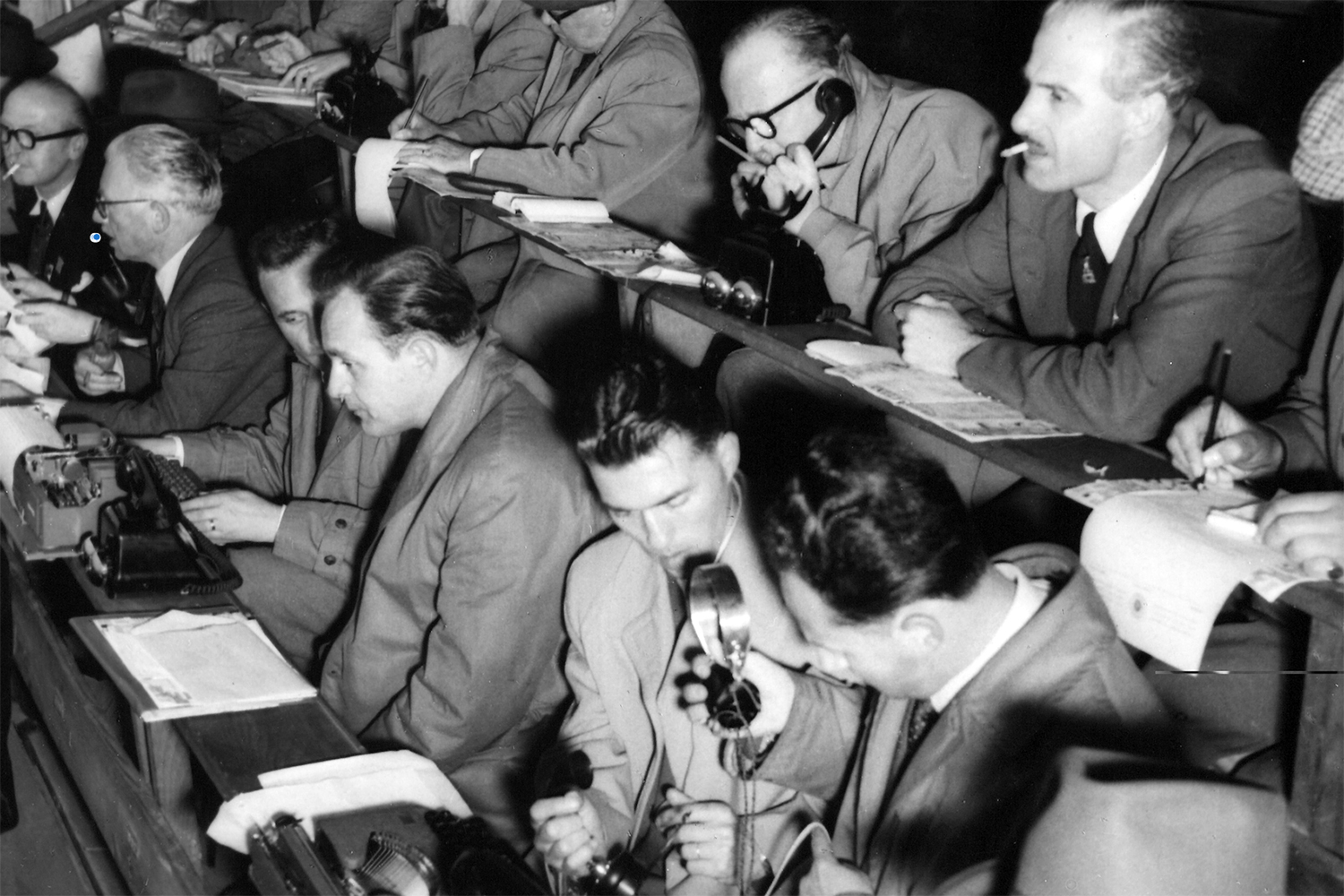By the time most football supporters go to bed on matchday, they will have seen the game, the clips, the press conference video, the data, the insights and the fan and pundit chat. Their own opinions too may be up there on social media.
When newsprint was king, trees were felled, paper rolled, ink vats filled, words typed, and dailies and Sundays printed and then sent round our islands in the dead of night for newsagents to sell across the counter or paperboys and girls to lug to front doors.
Within an hour of a result, an evening “pink’un” would drop on the street in some towns and cities with the results and minute-by-minute reportage. But for a true “match report”, you waited until the next morning. You held it in your hands or laid it on the kitchen table. It didn’t colonise and own your brain, as smartphones have.
Print endures, but what we used to think of as the traditional football “match report” expired 10 years or more ago, when digital arrived in tanks. “Kicking off into a stiff breeze” and “custodians” stopping “rasping shots” died a long time before that.
At some media outlets, football journalism has been purged to its bones in favour of “influencers” and “content” – algorithm-driven pulp, a race to the bottom dressed up as corporate agility by self-preserving execs eager to sound future-facing. Through all of this, live-action reporting has not become redundant. It has merely changed.
The Observer’s sports section doesn’t believe in telling you what you already know. And the list in the first paragraph of this column points to the reader already knowing what they want to know about their team by the time they switch off the lights. Yesterday is dead on arrival, unless you can make it interesting.
Reporters at newspaper groups are now quite rightly told to prioritise “online” over print. Two masters are served at once. Print and digital are chained together uncomfortably until one wins.
And it won’t be print, which is having to evolve into something more than a wadge that people pick up in the supermarket or wander down to the corner shop to buy.
We can all agree that chronological reports that told you of the crunching tackle, the disallowed goal and the 73rd-minute header that shook the crossbar are redundant. Some readers are entitled still to want something their printed paper has been providing them with all their lives. But just as you never see anyone in a phone box anymore, journalism can’t deploy acres of newsprint to repeat known facts.
But wait. Football and sports journalism has no wish to do so. In digital, within an hour of the match, there remains a demand for live thematic or analytical reporting. An example. A reporter at Manchester United v Arsenal last weekend might have focused on the debuts of Benjamin Šeško (United) and Viktor Gyökeres (Arsenal), or on United’s reboot. The best football scribes can fall back on their experience and authority to interpret what they’ve witnessed.
This rumination is appearing on a sports page because writing about football needs defending. There are industry gurus who think audio and visual will drive written words into the sea: a relentless onslaught of clips, podcasts, memes, tweets, edits and reels that will have fans constantly thrusting their phones at friends and saying: “Mate, have you seen this?”
A fresh boom has been in data, with expected goals, assists, goal “involvements”, ball retrievals, hotspots and sometimes-convoluted tactical dissection positioning itself as the new journalism. “Match report” is a term now so misleading that it serves no purpose in describing what football journalism actually does.
The hardest part will always be breaking stories or finding out what’s actually going on. Amateur football chat based on recycling gossip, supposition or attention-seeking shouldn’t really be labelled as journalism.
An idea that some media organisations have been pushing is that there’s no longer any point in sending reporters to games because people just want soundbites and clips and content. It saves accountants money but it also hands ownership of the news to clubs, who are media companies too now.
“Match reports” just need a new label, free of dead associations. Football reporters had already moved them on anyway, to analysis, comment and data.
The slab of copy now has to work extra hard to keep the reader hooked. It has to be revealing, authoritative, provocative, dramatic or beautifully written to hold the gaze. The “digestible chunks” principle now governs the act of writing: five things we learned, what they said, was it handball, should it have been a red card, and so on. Usually this is no bad thing. The best reporters do it well, because they know their subject and their craft.
Our eyes and brains have been rewired, but writing can’t be abandoned, in football, sport – or anywhere. Football reporting can save itself by adaptation, yes, but surrender, no. A friend who told me he knew everything about that day in the life of his team by 11pm said he would still read a fresh perspective the next day, if he respected the writing or the writer.
That’s the aim. That was always the aim.
Photograph by Universal Images/Getty

